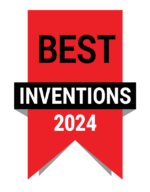Integrated in situ remediation of honing oil in a chalk aquifer, UK
Case study highlights:
- Enhanced vacuum extraction avoided the installation of abstraction equipment onsite and reduced the treatment program
- A combination of approaches targeted each contaminant phase in order to provide the most efficient technique for each level of contamination, from LNAPL to low dissolved phase/li>
- A rapid and dramatic reduction in the contaminant concentrations was achieved
- Low concentrations were maintained through the targeting of sources of rebound via desorption and back-diffusion
At an active factory, the spillage of ‘honing oil’, a heavy oil used as a lubricant in metal machining, occurred in the oil recovery plant on the side of the main building. The oil infiltrated the vadose zone and entered the groundwater via fractures in the weathered chalk under the site. This resulted in high levels of dissolved phase contamination and some Light Non Aqueous Phase Liquid (LNAPL) on the ground. The contamination posed a potential offsite liability for the site owner and so it was determined that active remediation should be voluntarily completed.

 Americas
Americas Europe
Europe Français
Français Deutsch
Deutsch Italiano
Italiano Español
Español



